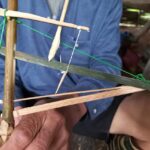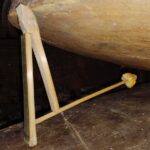When we were visiting a band of primitive living Orang Rimba (Kubu) people in Jambi province, Sumatra, Indonesia, each of their shelters had a spring pole snare trap nearby, which was set when they left for a walkabout. The working principle of these traps was very similar to that of any other hunter-gatherer tribe worldwide. This Orang Rimba band was only accessible after a long boat ride; over land, it would have taken us many days walking to reach them. None of them was a registered citizen of Indonesia, and they were very shy.
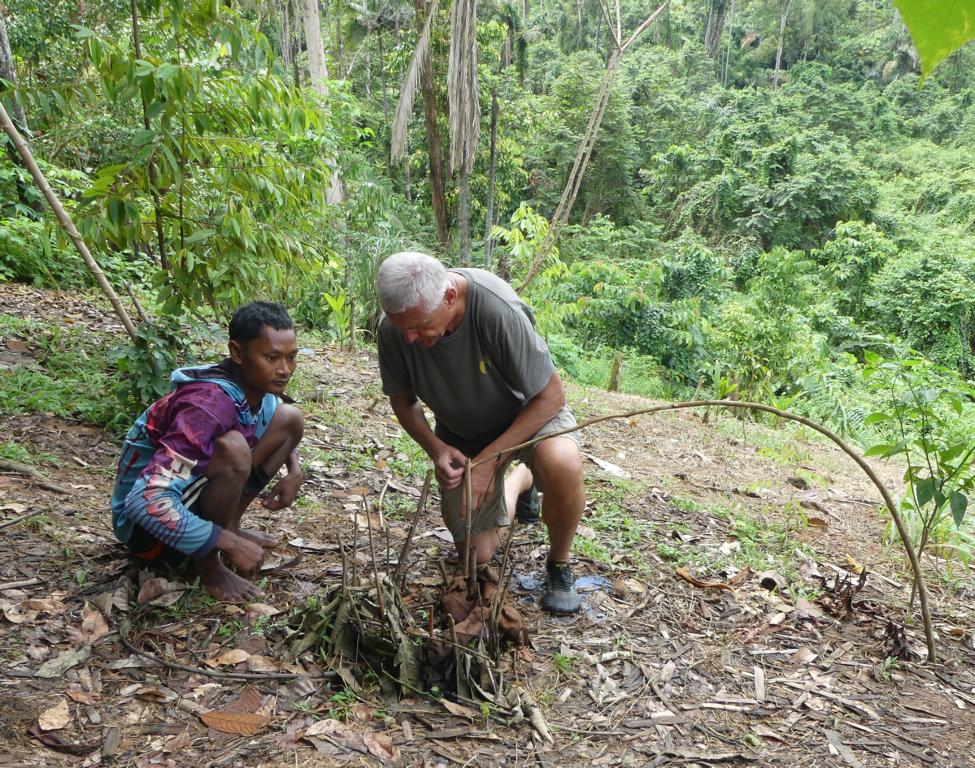
What are the target animals?
These spring pole snare traps are intended to catch various small species of herbivores in the lowland rainforest areas of their surroundings, with a focus on mouse deer, rabbits, squirrels, and porcupines. Specifically, the following species:
- Lesser Mousedeer / Kancil (Tragulus kanchil),
- Sumatran Rabbit / Kelinci Sumatra (Nesolagus netscheri),
- Plantain Squirrel / Bajing Kelapa (Callosciurus notatus), and four other species of ground- and tree squirrels.
- Sumatran Porcupine / Landak Mancik (Hystrix sumatrae)
As a bycatch, other small-sized animals, such as various species of rats, can also be caught in these traps.
Snare trap location
The above-mentioned target species naturally inhabit primary and secondary rainforests and edges near water sources. Besides these habitats, they also regularly check out the surroundings of Orang Rimba shelters, where they know to find leftovers from human meals and tuber peels. Most of the shelters are only used temporarily, as the inhabitants walk off into the forest for weeks before returning. And every shelter is located about 500 meters apart from the next neighbor. Due to the enticing remembrance of finding energy-rich food there and the lack of disturbance, the open ground around these shelters is a prime place for setting up snare traps to catch the target species.
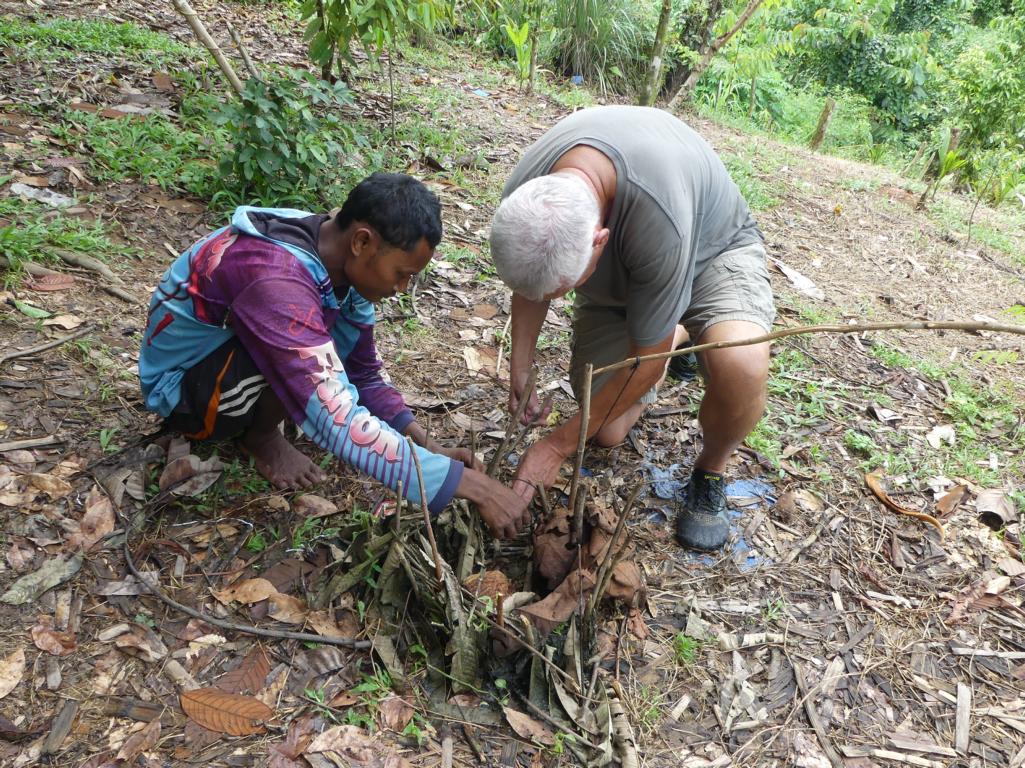
The small Sumatran Porcupines are only caught after the rainy season, when the days are getting dry and sunny. Then, the porcupines will dig up and feed on Salak palm (Salacca zalacca) roots. And for these animals, the area around the Salak palms is the best place to catch them. The ideal bait for them is, not surprisingly, fresh Salak root pieces.
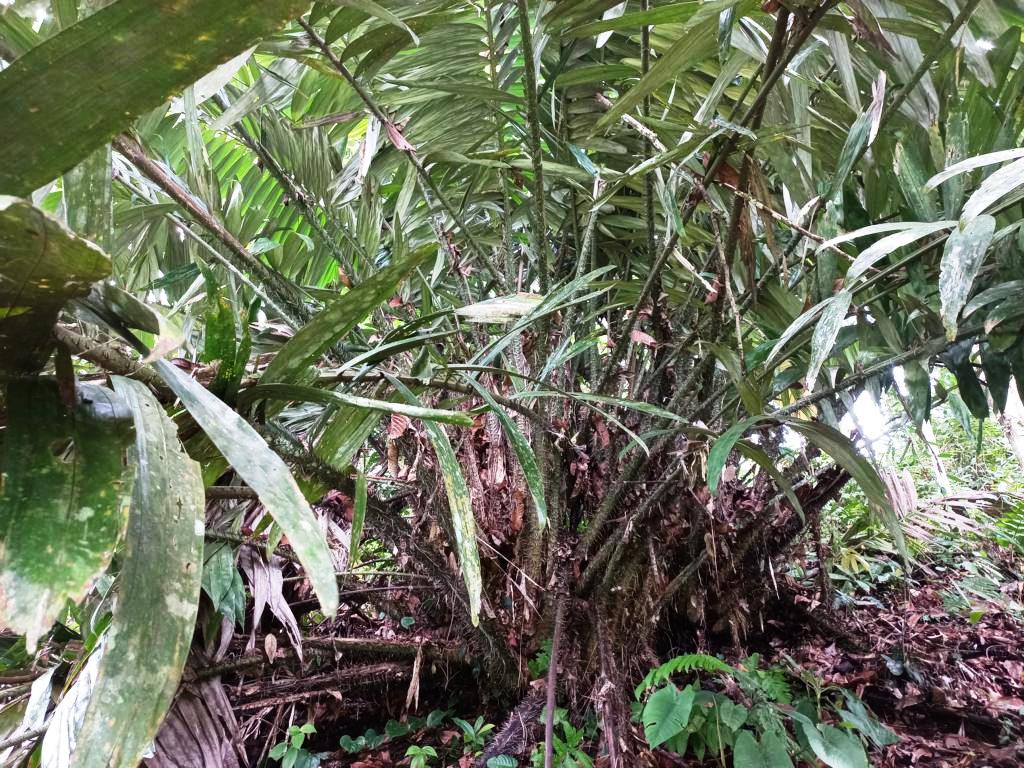
Salak palms grow in clumps and have petioles and rachises that are densely covered with very sharp and long spines. It is therefore not easy for humans to dig out these roots.
The springpole snare traps are set up before leaving for the forest for an extended hunting trip or collecting Jernang fruits. During that time, one remaining member of the band will check the snares from a distance daily.
Snare trap design
The principal design of the spring pole snare trap is quite simple. A small rattan hoop or bow will be stuck to the ground with a holding stick through it and across.
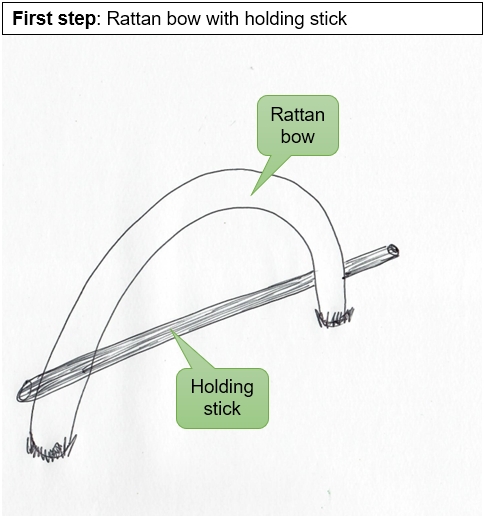
Onto the holding stick, a trigger stick will be laid. A release pin will be knotted into the catching rope and connected to the upper end of a spring pole.
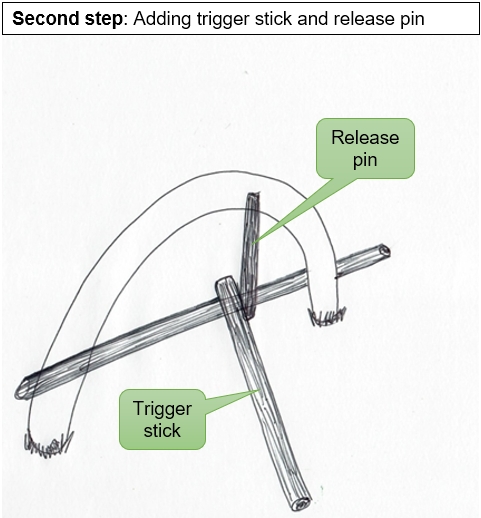
The pulling force of the rope is holding the release pin in place, countered by the holding stick, which itself is held in place on its rear end on the ground.
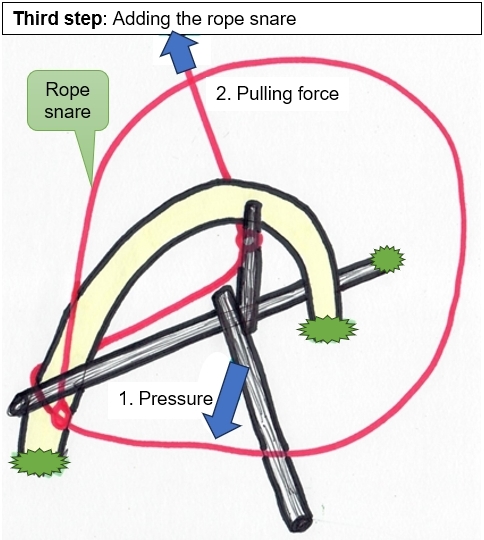
The snare is formed as an extension of the rope holding the release pin and stretched over the rattan bow and holding stick. A nose will be formed, which fits the size of the target animals.
An interesting detail of the Orang Rimba spring pole snare traps is that they use the same tensioned rope to knot in the release pin directly. And they continue to form the snare loop with this rope. Other hunter-gatherer tribes knot a short (5 cm or 2 inches) side string into the tensioned rope, which holds the release pin separately.
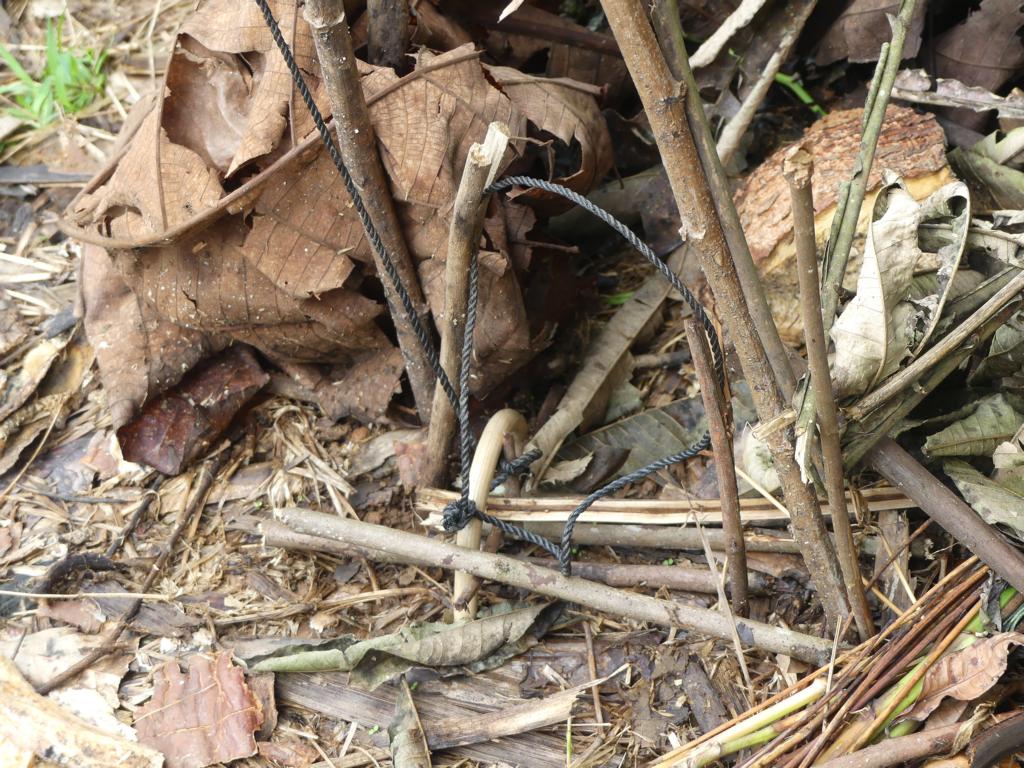
To keep the snare open, two wooden sticks, which are split on their top ends, hold the snare loosely on both sides.
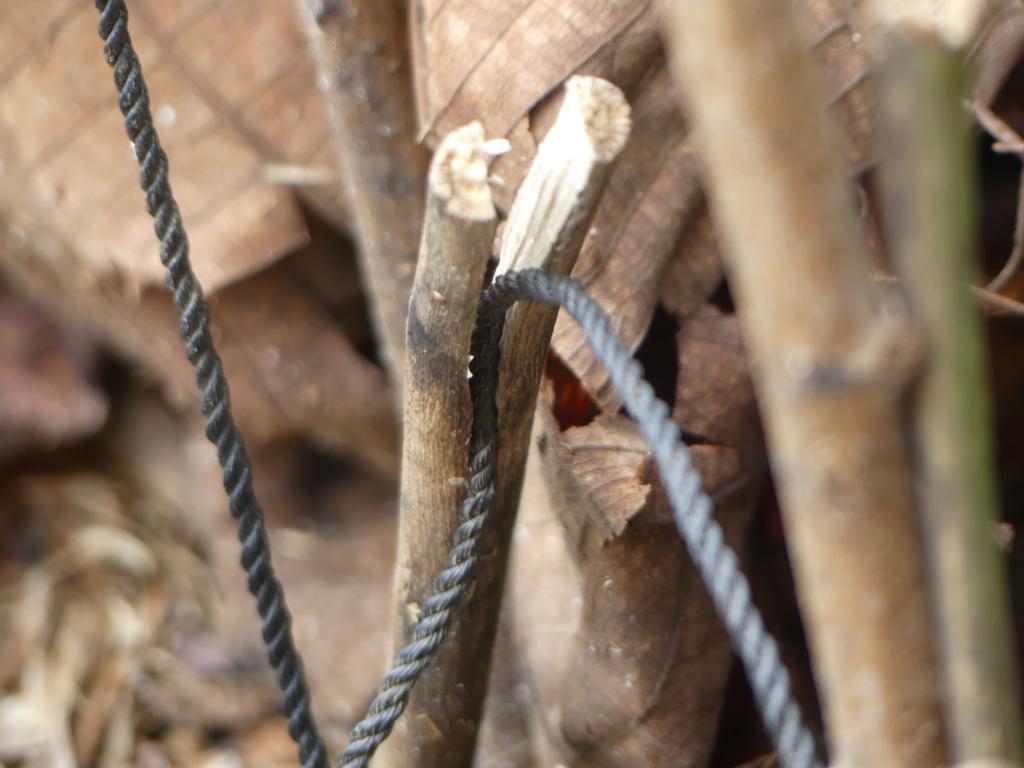
The catching chamber behind the snare trap entrance will be formed by a fence of wooden sticks, camouflaged by dry leaves and other natural debris. This material should not smell stronger than the bait inside the chamber; therefore, no green sticks or leaves are used. This catching chamber is used repeatedly, so that it does not emit odors from disturbed earth or other sources.
Function of the spring pole snare trap
If an animal enters the only entrance for feeding on the bait, it will invariably press down the trigger stick. This releases the tensioned release pin, which in turn closes the rope snare and catches a part of the animal. This will be either the neck, forebody, or a leg. Due to the roughness of the rope and the tight noose, an opening of the snare will be avoided.
Which baits are used in these snare traps?
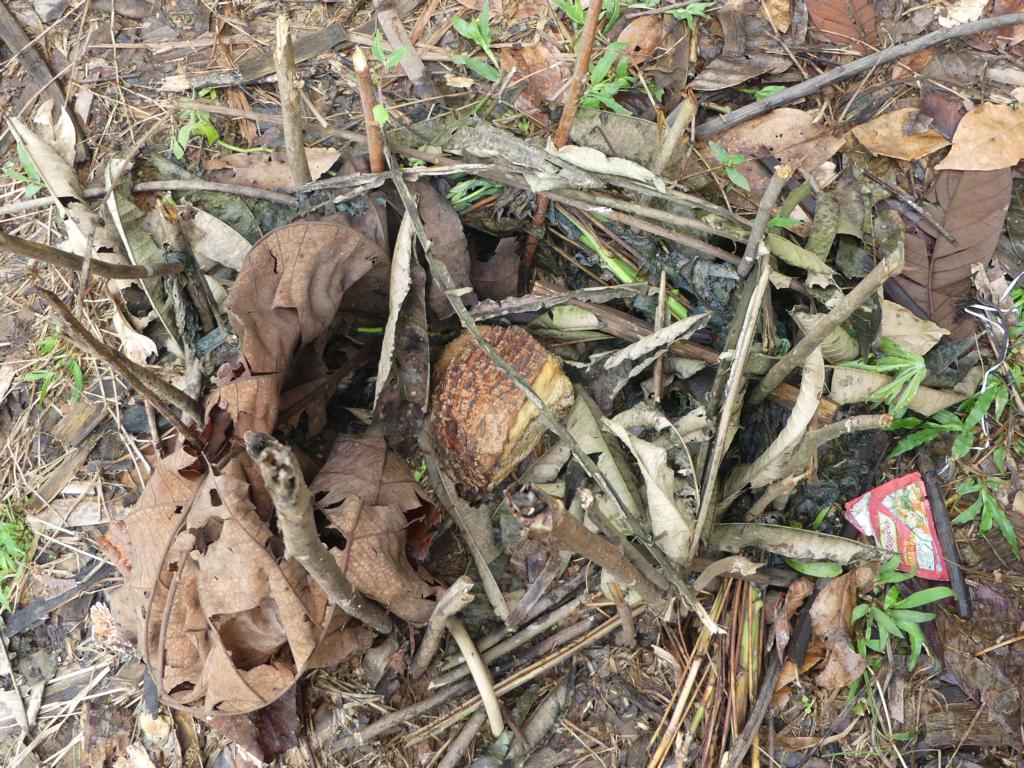
All the small target animals have a keen sense of smell, so fresh, aromatic corms or tubers, rich in carbohydrates (for energy), are ideal. Peeled or cut pieces expose the scent and make the bait more attractive. Various species of yams or cassava tubers are the first choice, followed by taro corms and tubers of Amorphophallus plants. Sweet potatoes would be another good choice for bait, due to their bright color and high sugar content. This tuber, however, is too valuable for the Orang Rimba to use as bait – they prefer to eat them themselves. In our case, we used quarters of a raw yam tuber.
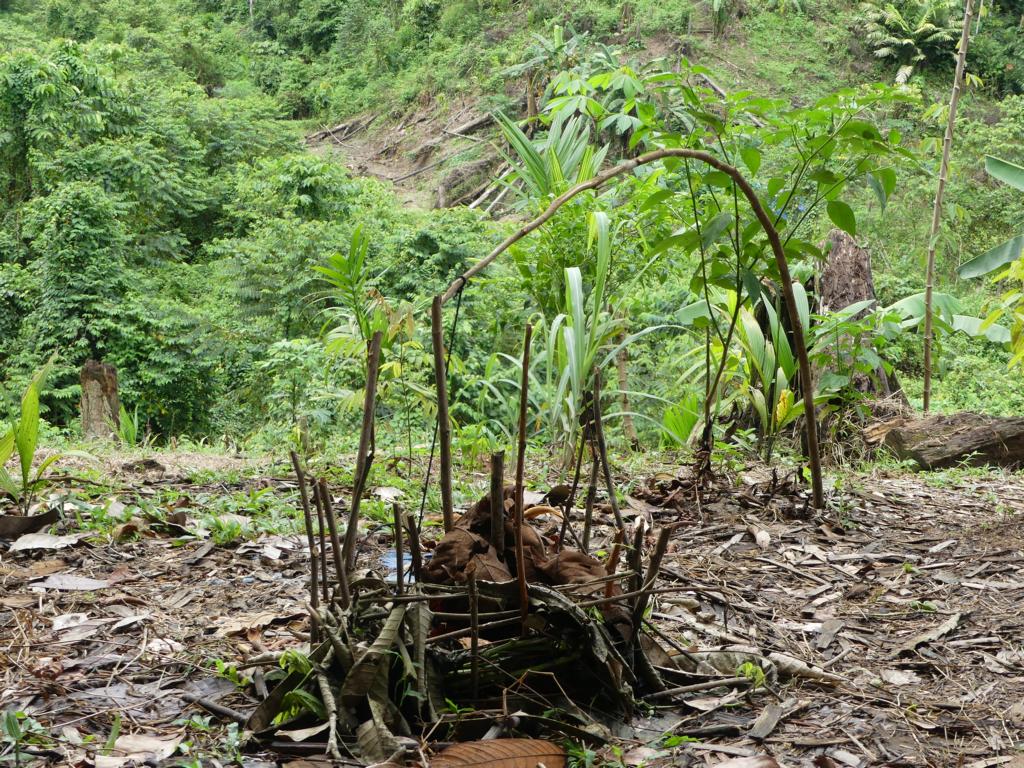
Lessons learned about Orang Rimba spring pole snare traps:
- Spring pole snare traps will be placed by Orang Rimba people near their shelters in the forests.
- Porcupines will be caught around Salak palms after the rainy season.
- The functional design of these trips is very similar to that of other hunter-gatherer tribes worldwide.
- Favorite baits are yams and cassava tubers.
.



